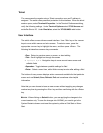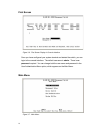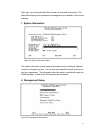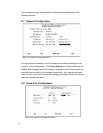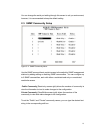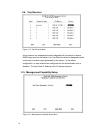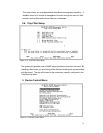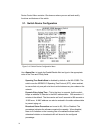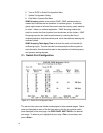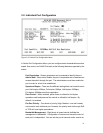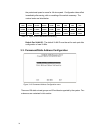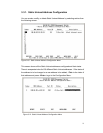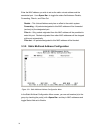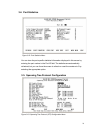23
x Ingress Filtering examines the tagged header of each tagged frame that
enters a port and determines whether the tagged frame and the port that
received the frame are members of the same VLAN. If they belong to the same
VLAN, the port accepts the frame. If they belong to different VLANs, the port
discards the frame. If Ingress filtering is disabled, any tagged frame is
accepted on any port on the switch. It does not matter whether the frame and
port belong to the same or different VLANs.
x
Per-Port Priority
allows port-based priorities. You can designate the priority
for the receiving port so that any frame received will be transmitted to the
destination port with the programmed priority. However, if the received frame
has a layer 3 priority (TOS or DiffServ), it will have precedence over
port-based priority. When set, all ports by default have the lowest priority
possible. If a priority different from lowest is wanted, the priority must be
changed for each individual port in the Port Configuration Menu.
x HOLB Prevention - Head Of Line Blocking occurs when many ports send
frames to the same output port. This puts the frames in contention for output
port and all frames must wait behind, thus the head of the line goes first. The
shared memory switching fabric architecture eliminates any possibility of
head-of-line blocking when this feature is enabled.
x When
QoS
is enabled, you can map the Type of Service of your choice
(according to IEEE 802.1p) to the 4 priority levels provided.
x There are 3 different modes of VLANs supported in this switch, 802.1Q,
Port-Based VLANs
and
MTU/MDU
. The choice you make here will
ultimately decide the VLAN mode and function for the entire switch. If one
mode is selected, the other two VLAN modes will have no effect on the
switch.
x GVRP Enable State is used with IEEE 802.1Q VLANs. GVRP enables the
switch to dynamically create 802.1Q compliant VLAN links with other
switches running GVRP. This reduces the chance for errors in VLAN
configuration by automatically providing VLAN ID (VID) consistency across
the network. You can use GVRP to propagate VLANs to other GVRP
switches instead of manually having to set up VLANs in each switch. In order
to activate GVRP without overlapping VLANs, follow these steps:
1. Assign static VLANs.
2. Take out ports that belong to assigned VLANs from Default VLAN.
3. Assign those ports to Local VID in Switch Port Configuration Menu.
4. Tag the uplink port in the Untagged Configuration Menu.
5. Turn on STP in Switch Configuration Menu.



